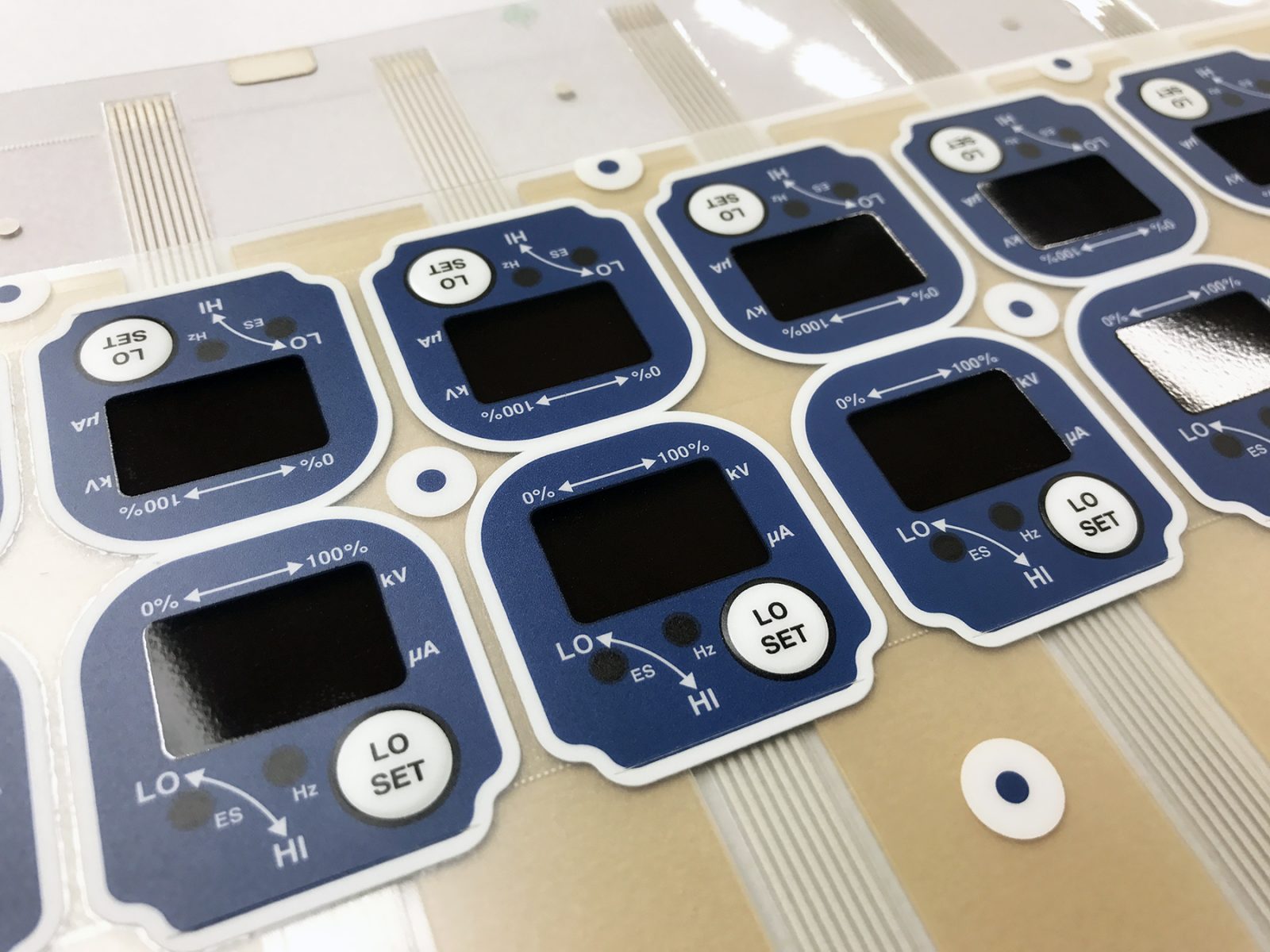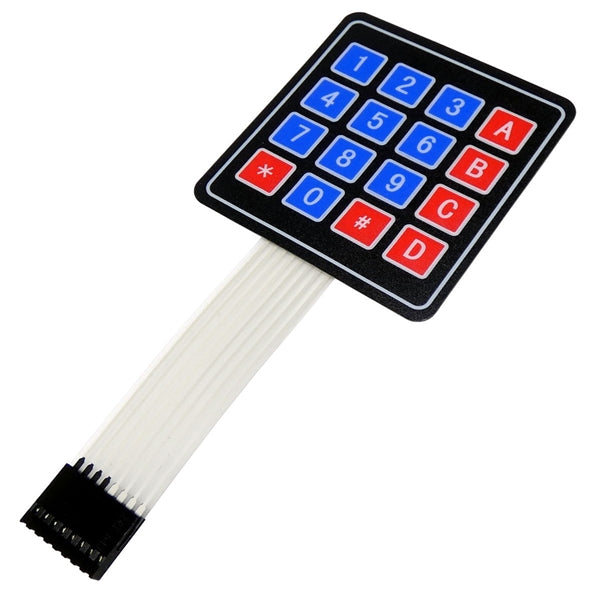Membrane Layer Change Innovation: The Secret to Dependable and Cost-efficient Interfaces
Membrane layer switch technology has actually emerged as a pivotal component in the layout of interface, giving both integrity and cost-effectiveness throughout a varied series of applications. Its robust building makes certain resistance to environmental obstacles, while the versatility in layout enables tailored solutions that satisfy specific sector needs. As we check out the diverse advantages of membrane layer buttons, their possibility for innovation raises concerns about future applications and progressing trends. What does the following chapter hold for this technology in an increasingly electronic landscape?
Understanding Membrane Layer Switch Technology
Membrane layer button modern technology is a widely used user interface option in various digital gadgets, offering a smooth mix of performance and design. This technology integrates numerous layers of materials, usually consisting of a graphic overlay, spacer layer, and a circuit layer. The visuals overlay shows the user interface aspects, while the spacer layer divides the circuit layer from the overlay until a customer activates a switch.
When stress is put on the overlay, the circuit layer completes the electrical circuit, sending a signal to the device. This device allows for various configurations, consisting of responsive feedback and backlighting options, enhancing customer communication. Membrane switches are normally produced utilizing sturdy products such as polyester or polycarbonate, ensuring long life and resistance to ecological factors like wetness and dust.
The versatility of membrane layer switches allows their application in diverse industries, including clinical gadgets, customer electronics, and commercial controls. Their portable style permits integration into space-constrained environments, supplying a reliable individual interface without compromising aesthetic charm. Recognizing the ins and outs of membrane button technology is crucial for manufacturers and designers looking for to create reliable and efficient human-machine user interfaces.
Trick Advantages of Membrane Switches
While numerous interface options exist, membrane layer changes deal distinct advantages that make them a preferred selection in numerous applications. Among the primary benefits is their toughness; membrane buttons are designed to hold up against extreme ecological problems, consisting of moisture, dirt, and temperature changes, guaranteeing durable performance. This durability dramatically reduces the need for constant substitutes, thus lowering overall upkeep costs.

Additionally, membrane layer buttons are light-weight and small, making them ideal for applications where room is limited. Their inconspicuous style adds to a sleek appearance without endangering capability.
Cost-effectiveness is likewise a remarkable advantage, as the manufacturing procedure for membrane switches often tends to be less expensive contrasted to standard mechanical buttons. This affordability, combined with their integrity and convenience of installation, settings membrane layer switches over as a sensible option for a wide variety of markets looking for reliable and effective interface.
Applications Throughout Numerous Industries
Just how do membrane buttons adapt to the varied requirements of various sectors? Membrane layer switch technology is significantly recognized for its flexibility, making it suitable for a broad range of applications throughout multiple fields.
In consumer electronics, membrane layer buttons offer a small remedy for remotes and home appliances, improving individual experience via instinctive style. In addition, the industrial industry leverages membrane layer buttons for equipment control panels, benefiting from their resistance to harsh atmospheres, such as dampness and dust.
Military and aerospace applications additionally use membrane switches for their dependability and ability to stand up to severe problems, guaranteeing operational performance in crucial situations. In addition, the food and drink market embraces these buttons for automated systems, where hygiene and simplicity of procedure are vital. Ultimately, membrane layer switches are tailored to meet the one-of-a-kind needs of each sector, showing their crucial duty in modern technology interfaces
Style and Modification Choices

In the realm of membrane layer switch modern technology, design and modification options play a crucial role in boosting functionality and user communication. These buttons can be customized to meet specific operational demands and aesthetic choices, making them flexible elements in numerous applications.
Among the primary personalization choices is the design of the button itself, which look at this website can be designed to suit special interface and ergonomic considerations. By readjusting the form, dimension, and setup of buttons, manufacturers can create user-friendly designs that assist in ease of use. In addition, the unification of various shades and visuals overlays enables branding and boosted presence, guaranteeing that users can swiftly identify features.
Moreover, membrane buttons can be engineered with numerous responsive feedback mechanisms, such as elevated buttons or distinct clicks, to improve the you can find out more individual experience. Different products can additionally be chosen for resilience and ecological resistance, resolving elements such as moisture, temperature fluctuations, and chemical exposure.
Inevitably, the comprehensive design and customization choices offered in membrane layer switch technology equip businesses to create customized solutions that not only fulfill useful requirements yet additionally align with their branding and operational demands.

Future Trends in Membrane Layer Switches
As membrane layer switch technology proceeds to develop, future patterns are progressively focused on improving individual experience and incorporating sophisticated functionalities. One significant fad is the combination of touch-sensitive and capacitive technologies right into standard membrane buttons. This advancement permits even more instinctive customer interfaces, offering responsive comments while keeping a sleek layout.
An additional emerging pattern is the usage of eco-friendly products, driven by the expanding need for sustainable production methods. Manufacturers are seeking to lower their carbon footprint by using recyclable substrates and low-impact inks, aligning with international sustainability objectives.
In addition, the increase of the Net of Points (IoT) is triggering the incorporation of wise attributes right into membrane switches. Improved connectivity alternatives will certainly enable tools to connect with each various other, enabling seamless assimilation right into broader systems.
Furthermore, innovations in printing technologies, such as digital printing, are permitting greater design adaptability and personalization. This enables suppliers to create complex layouts and vibrant colors cost-effectively.

Conclusion
To conclude, membrane layer button innovation represents a crucial advancement in user interface layout, offering significant benefits in durability, modification, and cost-effectiveness. Its prevalent applicability across diverse sectors emphasizes its significance in modern technology. As advancements continue to emerge, especially in touch-sensitive interfaces Web Site and sustainable materials, the capacity for membrane changes to enhance user experience and functionality stays encouraging. Proceeded exploration of this innovation will likely produce better renovations and broaden its extent in future applications.
Comments on “How Membrane Switches Enhance User Experience in Mobile Devices”